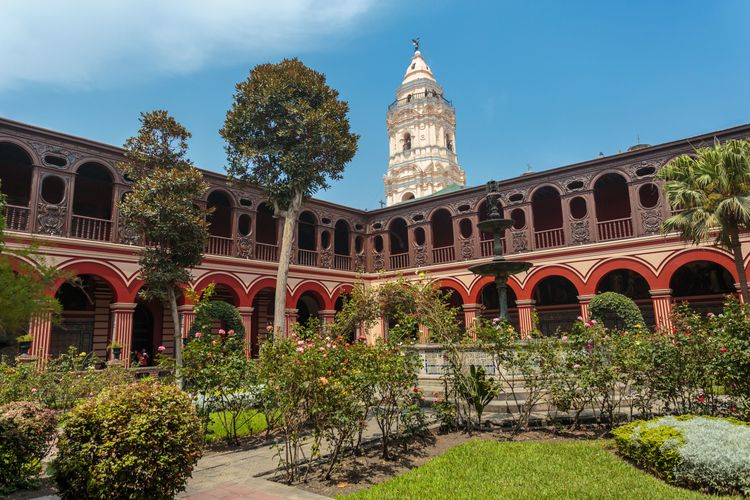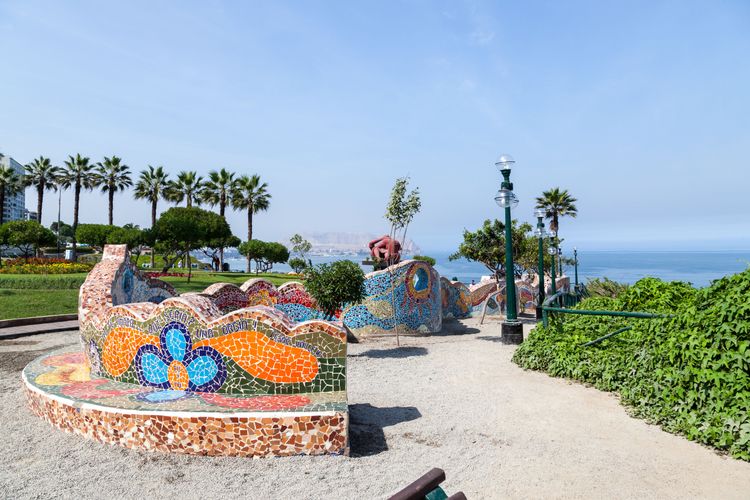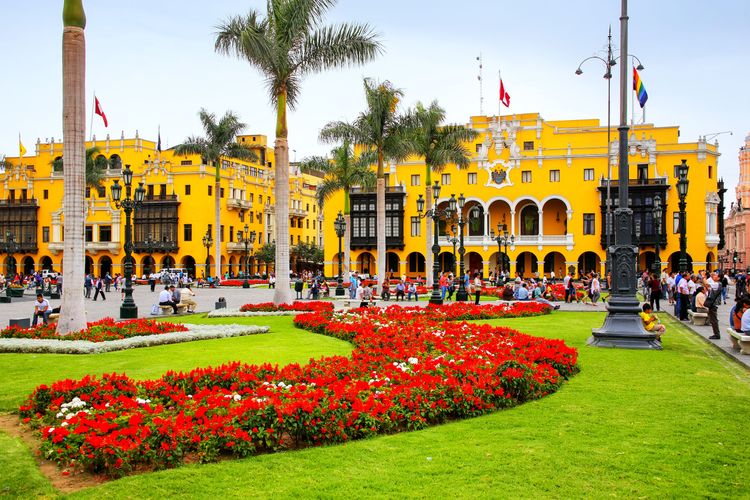From archaeological remains to colourful neighbourhoods
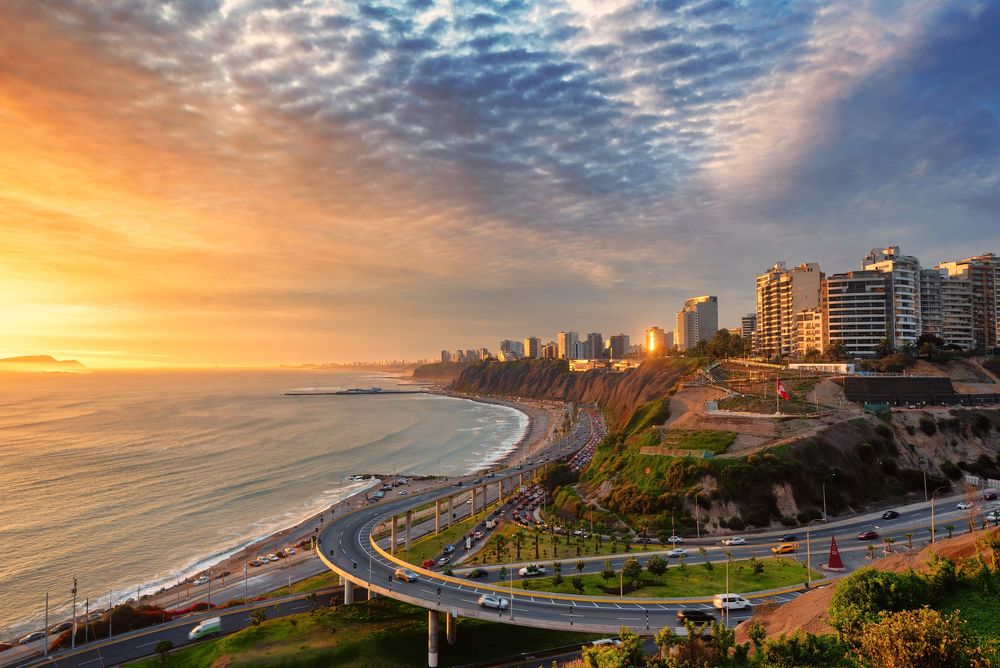
Lima, Peru's exciting capital, deserves to be better known. With its archaeological remains right in the heart of the city, its parks, its colonial and modern architecture, its museums and its outdoor activities, the capital is a real tourist attraction. Situated at the foot of the Andes mountains and surrounded by the sea, the city has a foggy climate for much of the year. But Lima is well worth a visit. Lively both day and night, the capital has preserved a fascinating city centre that bears witness to its rich past.
The colonial-style districts in the centre are listed as UNESCO World Heritage Sites, and still boast some fine 16th-century mansions, such as the flamboyant Casa de Jarava. The Basilica and Monastery of San Francisco, built over catacombs, are superb with their yellow and white facades.
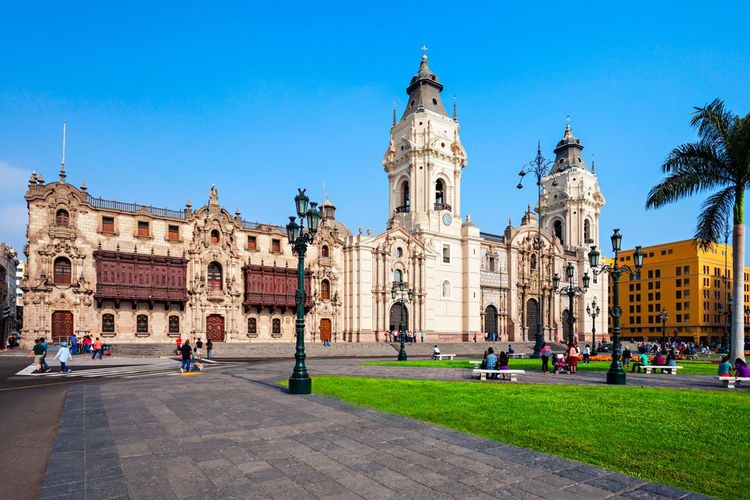
Lima's main square and cathedral
- © saiko3p / ShutterstockThe development of Lima is astonishing: buildings are rising on the cliffs facing the Pacific Ocean, at the foot of the Andes mountain range. Beaches stretch out below these broad rock faces, much to the delight of tourists. Sports enthusiasts and thrill-seekers will be won over in this city, where surfing and paragliding are daily activities, with the added bonus of a marvellous view of the ocean and the capital.
Why go there?
The historic centre is definitely a must-see on your visit to Lima, with its rich pre-Columbian influences. Wander around until you come across the Torre Tagle Palace, a Spanish Baroque palace that became the mystery of Foreign Affairs, the Plaza Mayor and Plaza San Martin, or Lima Cathedral. If you have time, try to get to Chinatown, and stroll through the beautiful Exhibition Park. Lima also has the largest bullring in South America, the Plaza de Acho.

Plaza San Martin in Lima
- © saiko3p / ShutterstockThe city has a number of very interesting museums. These include the Archaeological Museum, the Museum of Popular Arts and Traditions, and the Museum of the Inquisition and Congress. The Bullfighting Museum and the Larco Museum, famous for its mummies and ancient works of erotic art displayed in a special gallery, are among Lima's main exhibition centres. The San Francisco catacombs are also an original idea for a day out in the Peruvian capital.
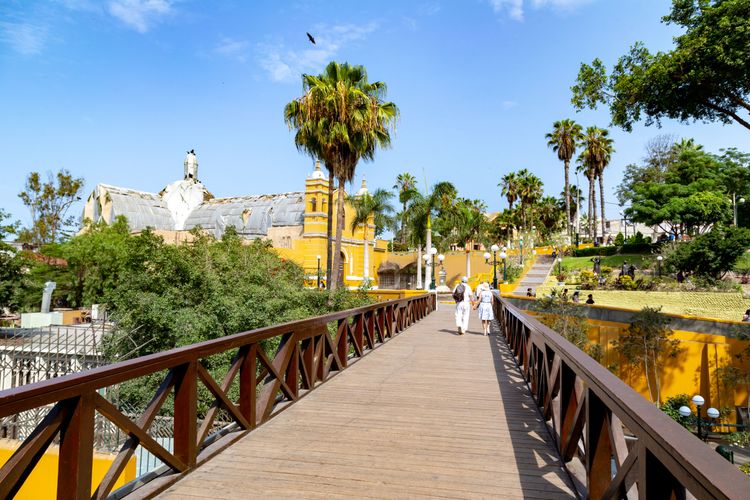
The bridge in Lima's Barranco district
- © Milton Rodriguez / ShutterstockLast articles
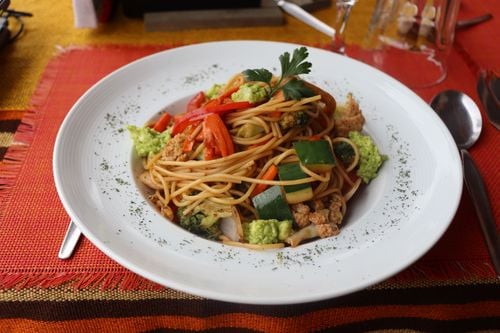
Discover Peruvian gastronomy
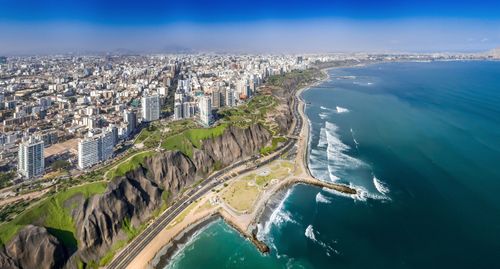
Lima: 2 days to discover Peru's bohemian capital
The must-sees
How to get there?
To get to Lima, you can take a direct flight from Paris with Air France, with a journey time of around 12 hours. There are also flights with stopovers in Madrid, Amsterdam, London or Sao Paulo, depending on the airline. Latam is the main airline in South America.
✈️ Fly to Lima!
Compare prices and book your plane ticket to Lima!Where to stay?
Lima has a huge range of accommodation on offer. Some districts are even renowned for housing numerous hotels, such as Miraflores and its many skyscrapers. The Barranco district is also one of the best places to stay. It's best to avoid the historic centre. Here is a selection of the most beautiful hotels in Lima.
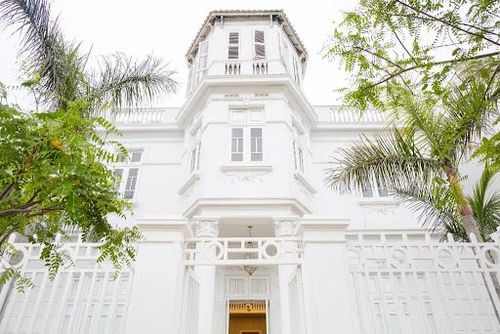
Practical information
When should you go?
Avoid leaving between May and October: this period is characterised by high humidity, brought on by the low clouds that cover the city. During the city's Foundation Week in January, a number of exhibitions, parades and festivities are held. If you can make it to Lima in February, you'll enjoy the magnificent carnival and wine festival. The Peruvian Independence Day is held at the end of July, and there are numerous religious festivals throughout the year.
Getting around
As far as means of transport within the city are concerned, there are many buses and minibuses in Lima, some of which can take you to neighbouring villages. The city also has a metro.
Do I need any vaccinations?
There are no compulsory vaccinations for travelling to Peru. It is advisable to be vaccinated against yellow fever in regions below 2300 metre of altitude.
What administrative formalities are required?
A passport valid for at least 6 months on the date of arrival is required to travel to Peru. You do not need a visa to travel to Peru as a tourist, although you will need to fill in a health and location declaration form, which you can find here.
What to bring back
You can bring back leather goods, which are known to be of very high quality in Peru. A bottle of Pisco, the local brandy, is also a good idea. You'll find plenty of alpaca wool clothing, especially in the markets. And don't forget musical instruments such as zamponas (panpipes). Peruvian handicrafts are particularly rich and interesting, and you'll be able to buy a wide range of pottery, sculptures, figurines and multicoloured woollen fabrics.
How long is the time difference?
The time difference between Paris and Lima is 7 hours between April and October and 6 hours from November to March.
Although thefts can occur in the streets, the tourist areas are safe, so just avoid the areas close to the favelas, such as Callao, Los Olivos or Rimac, and don't take any valuables with you. We recommend that you stay for at least 3 days, so that you have enough time to visit the city's tourist and archaeological sites, as well as its museums, bars and must-visit restaurants.
explore Try out our comparators
It is Easy to travel




